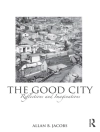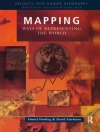In Europe, the emerging discipline of geodesign was earmarked by the first Geodesign Summit held in 2013 at the Geo Fort, the Netherlands. Here researchers and practitioners from 28 different countries gathered to exchange ideas on how to merge the spatial sciences and design worlds. This book brings together experiences from this international group of spatial planners, architects, landscape designers, archaeologists, and geospatial scientists to explore the notion of ‘Geodesign thinking’, whereby spatial technologies (such as integrated 3D modelling, network analysis, visualization tools, and information dashboards) are used to answer ‘what if’ questions to design alternatives on aspects like urban visibility, flood risks, sustainability, economic development, heritage appreciation and public engagement. The book offers a single source of geodesign theory from a European perspective by first introducing the geodesign framework, then exploring various case studies on solving complex, dynamic, and multi-stakeholder design challenges. This book will appeal to practitioners and researchers alike who are eager to bring design analysis, intelligent planning, and consensus building to a whole new level.
Mục lục
Part 1: Introduction .- 1: Introduction to geodesign developments in Europe.- 2: Which Way of Designing?.- Part 2: Resilience and Sustainability.- 3: Energy resilient urban planning.- 4: PICO: a framework for sustainable energy design.- 5: Holistic assessment of spatial policies for sustainable management: case study of Wroclaw Large Urban Zone (Poland).- 6: Recent applications of a land use change model in support of sustainable urban development.- 7: Using geodesign to develop a spatial adaptation strategy for Friesland.- 8: Geodesign to support multi-level safety policy for flood management.- 9: Multi-layer safety approach and geodesign: exploring exposure and vulnerability to flooding.- 10: Interactive spatial decision support for agro-forestry management.- Part 3: Heritage and Placemaking.- 11: History matters: The temporal and social dimension of geodesign.- 12: Urban landscape archaeology, geodesign and the city of Rome.- 13: GIS-based landscape design research: Exploring aspects of visibility in landscape architectonic compositions.- 14: 3DLOS: Visibility analysis model: Incorporating quantitative/qualitative aspects in urban environments.- 15: Space Syntax in theory and practice.- 16: A standard-based framework for real-time 3D large-scale geospatial data generation and visualization over the web.- 17: Crowdsourced public participation of city building.- Part 4: Adopting Geodesign Thinking.- 18: Geodesigning ‘from the inside out’.- 19: People centered geodesign: Results of an exploration.- 20: Enhancing stakeholder engagement: Understanding organizational change principles for geodesign professionals.- 21: Geodesign in practice: What about the urban designers?.- 22: Open Geospending: bridging the gap between policy and the real world.- 23: Towards geodesign: Building new education programs and audiences.
Giới thiệu về tác giả
Danbi J. Lee is an urban planner and geomatics specialist interested in the acquisition and application of spatial data in spatial planning and design processes. She is a Contributing Editor to GIM International Magazine, a leading trade magazine on geomatics technology developments from around the world. In 2013 she completed her MSc. research at Delft University of Technology on object-oriented land cover classification techniques for mapping urban surface infiltration capacity and is currently a researcher at the SPINlab of VU University Amsterdam.
Eduardo Dias believes that geo-information can help us make better choices. He divides his time between academia and industry. Eduardo teaches and researches geo-sciences at the VU University Amsterdam where he completed his Ph D in economics on the value of location information in 2007. And he is the research coordinator of Geodan, an innovative company in Amsterdam that is 100% dedicated to solving society challenges using geospatial technology. With a background and interest in environmental science and economics, Eduardo is trying to use spatial technology to enable citizens (and all stakeholders) to meaningfully engage in decision making processes.
Henk J. Scholten is the founder and CEO of Geodan, one of the largest European companies specialized in geospatial information technology. He is also a Professor of Spatial Informatics and Director of the SPINlab at VU University Amsterdam. He studied Mathematics and Geography at VU University Amsterdam and obtained his Ph D on the subject of models for housing allocation at the Faculty of Geography, University of Utrecht in 1988. Prof. Scholten received a Royal Decoration in 2005 for his significant contribution to geo-information, both on a national and international level, and the ‘Lifetime Achievement Award’ by Jack Dangermond, founder of ESRI in 2009. This award is given to a person who has contributed significantly to advancing the science and technology of GIS throughout his career.












